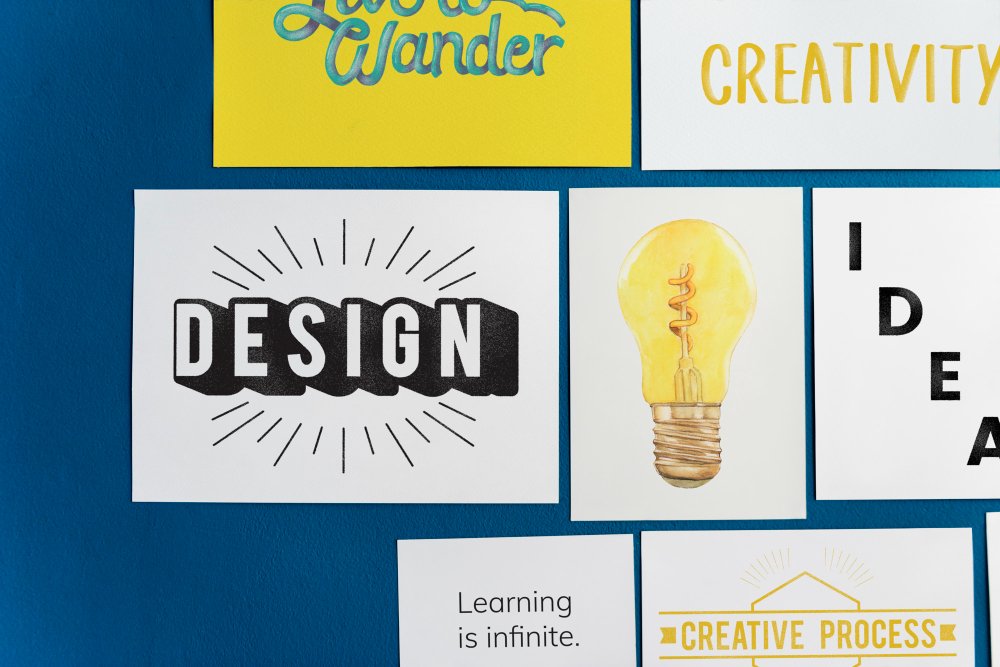Introduction
In today’s digital age, user experience (UX) design has become increasingly important for creating successful products and services. UX design is the process of designing digital interfaces that are both easy to use and aesthetically pleasing. The goal of UX design is to provide users with a positive experience that meets their needs and keeps them coming back.
UX design is a process that involves creating user-cantered digital interfaces that are easy to use, aesthetically pleasing, and meet the needs of the user. The UX design process involves research, design, testing, and iteration to create a product or service that provides a positive user experience.
Psychology plays a crucial role in UX design because it helps designers understand how users think, feel, and behave. By understanding the psychology of human behaviour, UX designers can create interfaces that are intuitive and engaging. They can also design interfaces that take advantage of human perception, attention, and memory to make the experience more efficient and effective.
The purpose of this study guide is to provide an overview of the key concepts and principles of psychology for UX design. It will cover the basics of human perception, attention, memory, behaviour, and decision-making. Additionally, it will provide insights into how to apply these concepts to UX design to create better products and services. Whether you are new to UX design or an experienced designer looking to improve your skills, this guide will provide valuable information to help you create better user experiences.
Key concepts in psychology for UX
Understanding key psychological concepts is essential for creating effective UX designs. In this section, we will cover some of the most important concepts in psychology for UX design.
A. Human perception and attention
Visual hierarchVisual hierarchy refers to the arrangement of elements in a design to guide the user’s attention. By using size, contrast, colour, and other visual cues, designers can create a hierarchy of information that makes it easier for users to understand and interact with the interface.
Gestalt principlesThe Gestalt principles describe how humans perceive visual information, rather than as individual parts. By understanding these principles, designers can create interfaces that are easier to understand and use. Some of the Gestalt principles include proximity, similarity, and closure.
Fitts’s lawFitts’s law states that the time required to move a cursor to a target area is directly proportional to the distance to the target and inversely proportional to the size of the target. This law can be used to design interfaces that are easy to use and efficient.
B. Human memory
Short-term memoryShort-term memory is the ability to hold a small amount of information in your mind for a brief period of time. By understanding the limits of short-term memory, designers can create interfaces that are easy to use and remember.
Long-term memoryLong-term memory is the ability to store and retrieve information over a longer period. By using techniques like repetition and chunking, designers can help users remember valuable information and tasks.
Memory biasesMemory biases are cognitive biases that affect how humans remember information. By understanding these biases, designers can create interfaces that are less prone to errors and more effective at communicating information.
C. User behaviour
MotivationMotivation refers to the internal and external factors that drive human behaviour. By understanding what motivates users, designers can create interfaces that are more engaging and effective.
EmotionEmotion plays a significant role in human behaviour and decision-making. By understanding how emotions affect user behaviour, designers can create interfaces that are more engaging and effective.
Decision-makingDecision-making is the process of choosing between different options. By understanding how humans make decisions, designers can create interfaces that are more effective at helping users make decisions that meet their needs.
By understanding these key psychological concepts, designers can create interfaces that are more effective, engaging, and user-friendly. In the next section, we will explore how to apply these concepts in UX design.
Psychology in UX Design: Creating Effective and Engaging User Interfaces
In this section, we will explore how to apply psychology in UX design. By following these principles, designers can create interfaces that are more effective, engaging, and user-friendly.
A. User research
Methods for understanding user needs and behaviorsTo design interfaces that meet the needs of users, it is essential to understand their needs and behaviors. User research can involve methods like field studies, ethnographic research, and online surveys to gather information about users.
How to conduct user interviews and surveysUser interviews and surveys are important tools for gathering information about users. Designers can use these methods to learn about user needs, preferences, and behaviors, and use that information to inform design decisions.
B. Design principles
How to apply visual hierarchy and gestalt principles?Visual hierarchy and Gestalt principles can help designers create interfaces that are easier to use and understand. By arranging elements in a logical order and using visual cues to guide user attention, designers can create interfaces that are more effective at communicating information.
How to use Fitts’s law to improve usability?Fitts’s law can be used to design interfaces that are more efficient and easier to use. By making target areas larger and closer together, designers can reduce the time it takes for users to complete tasks.
How to leverage memory biases for better user experience?Memory biases can affect how users remember information and complete tasks. By using techniques like repetition and chunking, designers can create interfaces that are more effective at helping users remember valuable information.
C. UX evaluation
Usability testingUsability testing involves observing users as they interact with an interface to identify usability issues. By testing interfaces with real users, designers can identify issues and make changes to improve the user experience.
A/B testingA/B testing involves testing two versions of an interface with different users to determine which version is more effective. By comparing user behavior and feedback, designers can make informed decisions about which version to use.
How to interpret user feedbackUser feedback can provide valuable insights into the user experience. By interpreting user feedback, designers can identify issues and make changes to improve the user experience.
By applying these principles, designers can create interfaces that are more effective, engaging, and user-friendly. Psychology is an essential part of UX design, and by understanding and applying these principles, designers can create interfaces that meet the needs of users and provide a positive experience.
Case studies of successful UX design based on psychological principles
In this section, we will explore examples of successful UX design that are based on psychological principles. We will examine case studies, before-and-after comparisons, and insights from real-world user testing.
Case studies of successful UX design based on psychological principles
Case studies are a wonderful way to understand how psychological principles can be applied to UX design. One such example is the redesign of the checkout process on the e-commerce website, ASOS. By simplifying the checkout process and reducing the number of steps, ASOS was able to increase their conversion rate by 50%. This is an example of how the psychological principle of reducing cognitive load can be applied to UX design.
Another example is the redesign of the Airbnb website. By applying the psychological principles of visual hierarchy and contrast, Airbnb was able to create a more user-friendly interface that was easier to navigate. The redesign resulted in a 14% increase in bookings, demonstrating the impact that psychological principles can have on UX design.
Comparison of before-and-after UX design changes
Comparing before-and-after UX design changes can provide valuable insights into the impact of psychological principles on UX design. One example is the redesign of the Mailchimp website. By simplifying the navigation and using visual hierarchy to guide user attention, Mailchimp was able to create a more effective and engaging interface. The redesign resulted in a 20% increase in signups, demonstrating the impact of psychological principles on UX design.
Another example is the redesign of the Slack app. By applying the psychological principle of reducing cognitive load, Slack was able to simplify the interface and make it easier for users to navigate. The redesign resulted in a 32% increase in user engagement, demonstrating the impact of psychological principles on UX design.
Insights from real-world user testing
Real-world user testing can provide valuable insights into the impact of psychological principles on UX design. One example is the redesign of the TurboTax website. By conducting user testing and gathering feedback, TurboTax was able to identify usability issues and make changes to improve the user experience. The redesign resulted in a 14% increase in completed tax returns, demonstrating the impact of user testing on UX design.
Another example is the redesign of the Fitbit app. By conducting user testing and gathering feedback, Fitbit was able to identify usability issues and make changes to improve the user experience. The redesign resulted in a 39% increase in user engagement, demonstrating the impact of user testing on UX design.
Psychology is an essential part of UX design. By applying psychological principles, designers can create interfaces that are more effective, engaging, and user-friendly. Case studies, before-and-after comparisons, and insights from real-world user testing provide valuable examples of how psychological principles can be applied to UX design. By understanding and applying these principles, designers can create interfaces that meet the needs of users and provide a positive experience.
Further resources for learning psychology for UX
In this section, we will provide some resources for those interested in learning more about psychology for UX design. These resources include books, articles, online courses and tutorials, and professional organizations and conferences.
Books and articles
There are many books and articles available that provide insights into psychology for UX design. Some of the most popular books include “Don’t Make Me Think” by Steve Krug, “The Design of Everyday Things” by Don Norman, and “100 Things Every Designer Needs to Know About People” by Susan Weinschenk. These books provide a comprehensive overview of psychological principles and their application to UX design.
In addition to books, there are many articles available online that provide insights into psychology for UX design. Some popular websites for UX design articles include Nielsen Norman Group, Smashing Magazine, and UX Design.
Online courses and tutorials
There are many online courses and tutorials available that provide a structured approach to learning psychology for UX design. Some popular platforms for online courses include Udemy, Coursera, and LinkedIn Learning. These courses cover a range of topics, from user research and testing to design principles and techniques. In addition to courses, there are many tutorials available online that provide practical guidance on applying psychology to UX design. Some popular websites for UX design tutorials include Adobe XD, Sketch, and InVision.
Professional organizations and conferences
Professional organizations and conferences provide a fantastic opportunity to connect with other UX designers and learn about the latest trends and techniques in the field. Some popular organizations for UX design include the User Experience Professionals Association (UXPA), the Interaction Design Association (IxDA), and the International Association of Computer Science and Information Technology (IACSIT).
In addition to organizations, there are many conferences available that focus on psychology for UX design. Some popular conferences include the UXPA International Conference, the Interaction Design Conference, and the Smashing Conference.
Conclusion
Learning psychology for UX design is essential for creating interfaces that meet the needs of users and provide a positive experience. Books, articles, online courses and tutorials, and professional organizations and conferences provide valuable resources for learning and applying psychological principles to UX design. By leveraging these resources, designers can improve their skills and create interfaces that are more effective, engaging, and user-friendly.
In this study guide, we have explored the role of psychology in UX design. We began by defining UX and highlighting the importance of psychology in creating effective and user-friendly interfaces. We then discussed key concepts in psychology for UX, including human perception and attention, human memory, and user behavior. Next, we delved into how to apply psychology in UX design through user research, design principles, and UX evaluation. We also looked at examples of successful UX design based on psychological principles and real-world user testing. We then provided resources for those interested in learning more about psychology for UX design, including books, articles, online courses and tutorials, and professional organizations and conferences.
In conclusion, psychology plays a crucial role in creating effective UX design. By understanding how users perceive, remember, and behave, designers can create interfaces that meet their needs and provide a positive experience. We encourage readers to apply psychological principles in their own UX design work, whether through conducting user research, applying design principles, or evaluating UX. By doing so, they can create interfaces that are not only functional and aesthetically pleasing but also effective and enjoyable to use.



